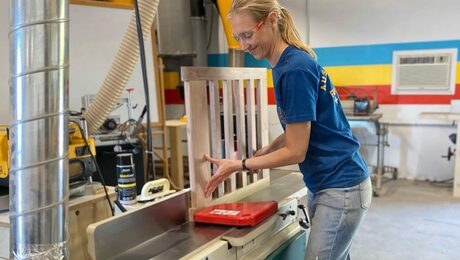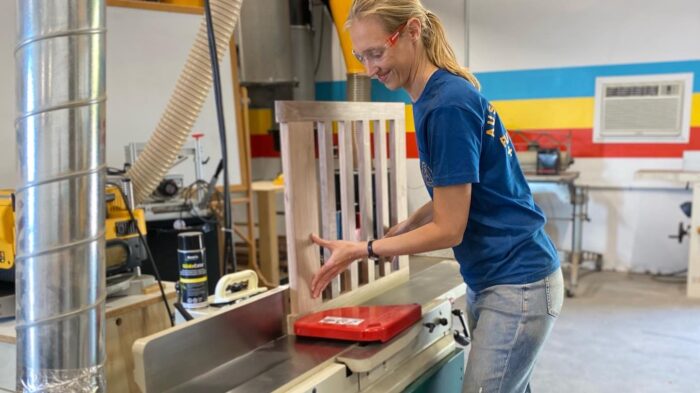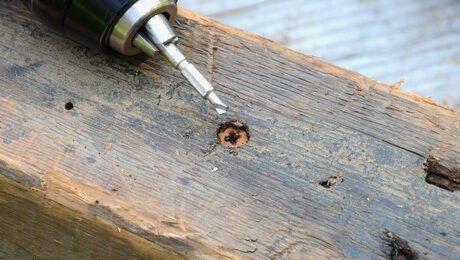Dos and dont’s of asking questions in a woodworking class
The way you ask questions in a woodworking class can quickly make you everyone’s favorite or least favorite fellow student. Not to mention, it has a huge impact on your learning experience and that of students around you. As a serial woodworking student, I’d like to offer five cents of advice on how and what to ask.
Clarifying Questions
Woodworking is full of jargon, machine/tool use is riddled with nuance, and wood itself mystifies. Covering all the fundamental concepts before jumping into a project would make for a very boring, hands-off woodworking class. You’ll likely be invited to try something before you know enough to do it well. If you’re confused about the meaning of a simple term, ask! If you lack the foundations of a basic concept, ask! If you feel unsafe, definitely ask! Most likely, other students will be grateful that you asked, and even seasoned students may learn more than they previously knew. Clarifying questions sound like this:
Wait, what’s a brad point bit?
Why do you draw some lines with a pencil and others with a marking knife?
Is a chamfer the same thing as a bevel?
Clarifying questions may be an exercise in humility, and they demonstrate to the instructor that you’re here to learn, not to prove yourself. And, poof, you’ve proved yourself. So ask away!
Questions of Engagement and Connection
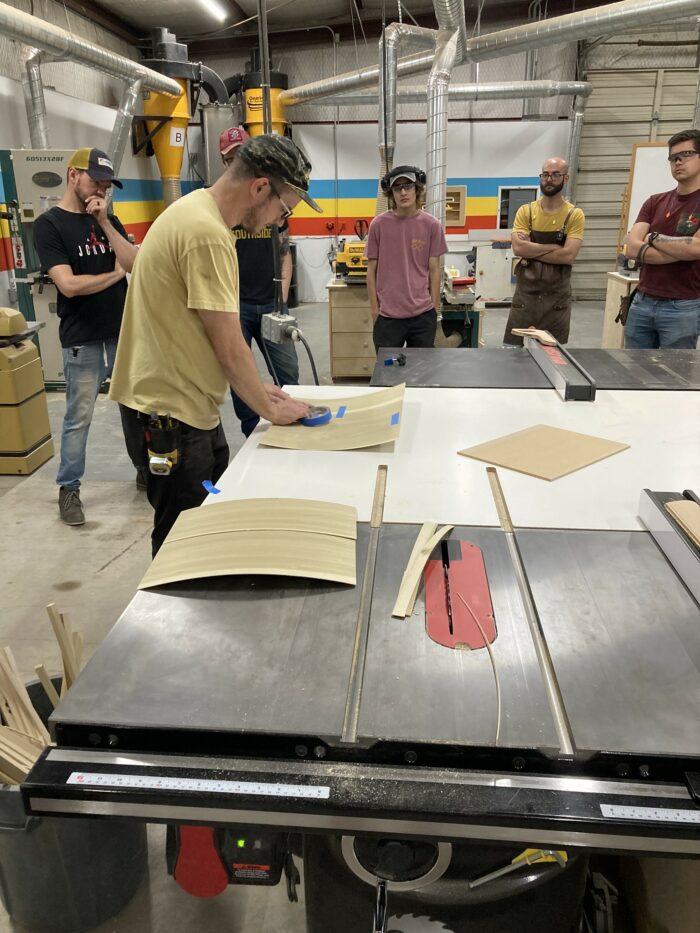
My favorite woodworking instructors are those who understand that details, technicalities, and jargon need foundational shelves to live on in one’s brain. Before you can successfully explain to me the difference in teeth on a crosscut saw and a ripcut saw, I first need to understand some basics about wood grain. Before I understand why to push a board across the router table in a certain direction, I need to understand some basics about safe handling of wood in the face of any rotating blade. Details are best presented in their greater context. And, hopefully, as you take a class, you will begin to connect new details to the foundational concepts in your brain. Or you may discover that a foundational concept shelf is missing.
Why do you run the drill at that speed?
In the moment, an instructor might give you a quick answer: “This is the right speed for this application, to prevent burning.” But what you’re really looking for is a foundational shelf labeled “Feeds and Speeds.” Later, when there is downtime in the class, ask the instructor to give you an overall picture of when to use drill bits at high speed and when to use them at low speed and why. Once that starts making foundational sense (and if there’s ample downtime), ask how this concept relates to router-bit speeds. A confession: I’m so bold as to often ask instructors, “Can you help me draw a chart of this concept?”
Questions for Deeper Learning
Here are a few questions I’ve picked up from fellow students that have really accelerated my learning.
How might this go wrong?
This seemingly pessimistic question can actually yield a thoughtful and instructive response. I had an instructor who pre-empted this question by ending each demo by telling us, “Here’s how this might go wrong …” He took the mistakes made by previous students and turned them to our advantage. Asking this question is good practice for working in your own shop. Think through all the safety concerns before turning on that machine.
Can you show me a second time how to do this?
Say you’re learning to hand-cut dovetails. You watch the demonstration and are eager to jump in and try it yourself. But after a few minutes back at your bench, you realize that parts of the demo escaped your attention. You’re comfortable with laying out the pins and tails, but you have no idea how to hold the saw. A second demo can often be helpful for the entire class, because you don’t know what to look for in the demo until you’ve actually tried it yourself.
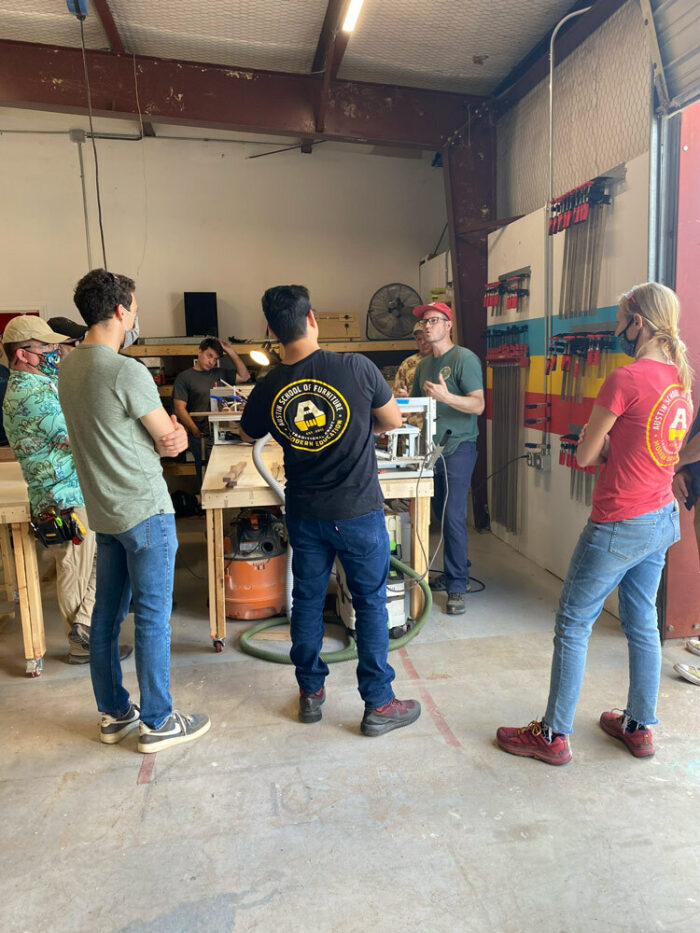
Advanced Questions
Perhaps you have a bit more knowledge or experience than the rest of the class. That’s fantastic! But also—WARNING—please proceed with caution. Your advanced background means you’ll have a different set of questions than the beginner students in your class. Asking too many advanced and out-of-place questions can deter beginners and can distract the instructor from getting through foundational material. The best strategy is to be mindful about which questions are best to ask the instructor in private.
Questions NOT to Ask Publicly and Why
How does the Janka rating and the MC of the wood affect your layout of these dovetails?
While there may be some interesting insights to glean from pondering this question, it is likely irrelevant to all the other students at their current level of experience. You wouldn’t want to interrupt a demo with a question like this, but find the right moment to ask your instructor privately. If the instructor thinks it’s a beneficial question for the whole class to consider, leave it to the instructor to bring it up. It’s great that you know some technical jargon, but it typically doesn’t impress anyone. (Is that the real reason you’re asking?)
In MY shop, I do it this other way because …
We all do things differently based on our setup at home. This is not actually a question but is typically read as a bid for attention and a distraction. If there’s a real question about technique here, ask it privately.
Since I’m doing MY project with Brazilian mahogany burl I brought from my vacation to the rainforest instead of the cherry provided in this class, how should I … ?
This is a great question to ask one-on-one, since it only pertains to you.
Unsolicited Advice and Answers
Instructors at most craft schools are selected not just for their woodworking experience but also for their educational chops. If a student asks a question and you happen to know the answer, please do not jump in and answer it. You are not here “to be helpful”; you are here to learn and to allow others to learn without interference. Give the instructor the proper respect and the space to direct the class accordingly. If there’s a piece of knowledge you “must” pass on to fellow students, it might be really well received over lunch.
And a final note. Just because I’m a young woman in the class, that is not an invitation for fellow students to wander over to my bench and offer me unsolicited advice or help on my project. For the love of wood, do not take the tool out of my hand and show me how you would do it. If you want to connect with me, be curious about my practice. Ask, genuinely, what I like to build. Let me show you pictures of my work before you tell me about yours. As the saying goes, “Unsolicited advice is always criticism.”
Sign up for eletters today and get the latest techniques and how-to from Fine Woodworking, plus special offers.

